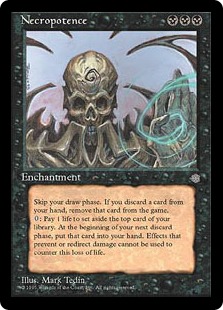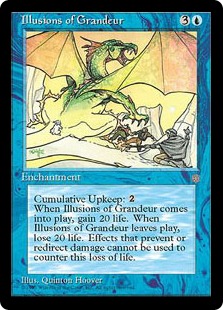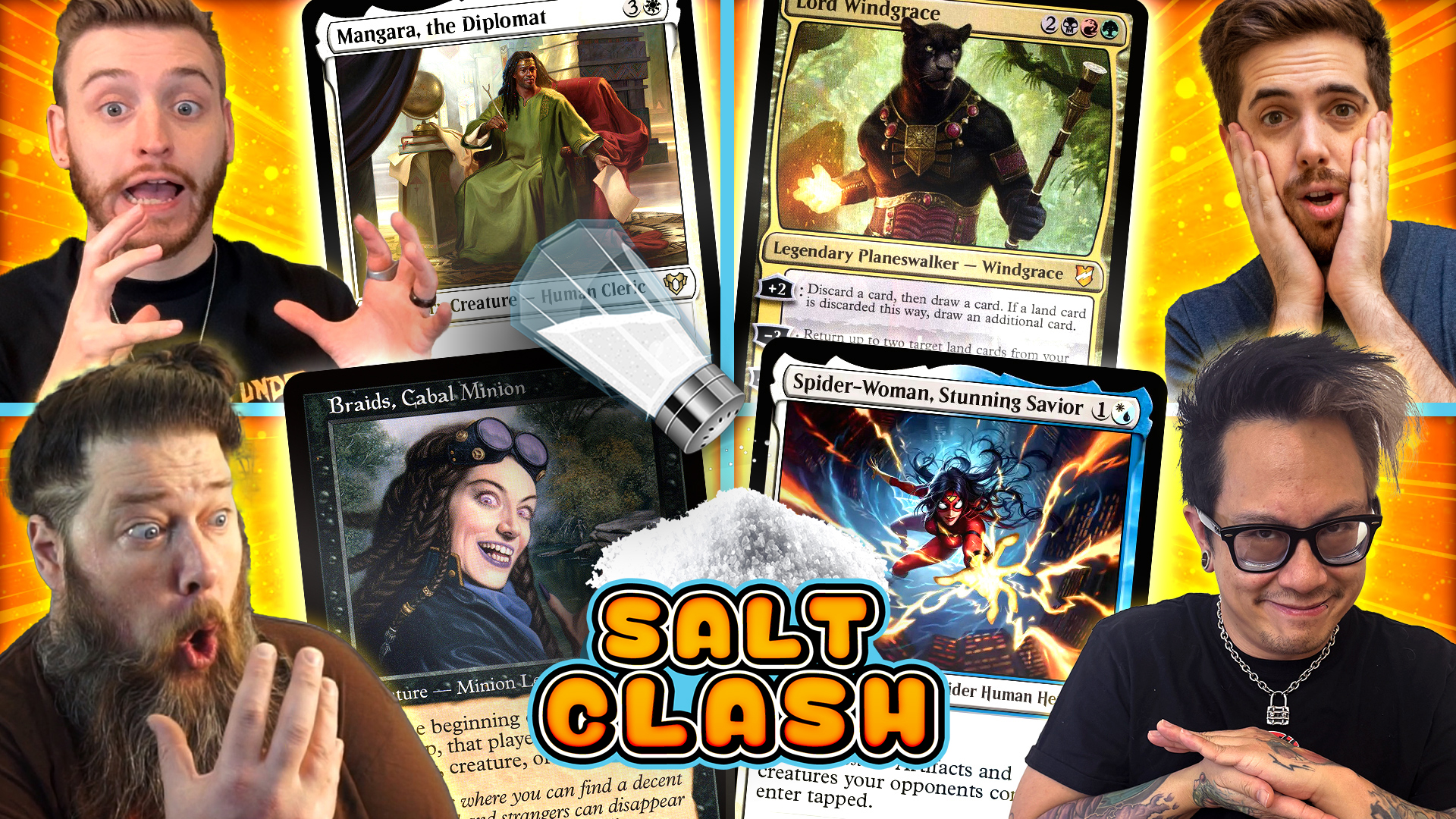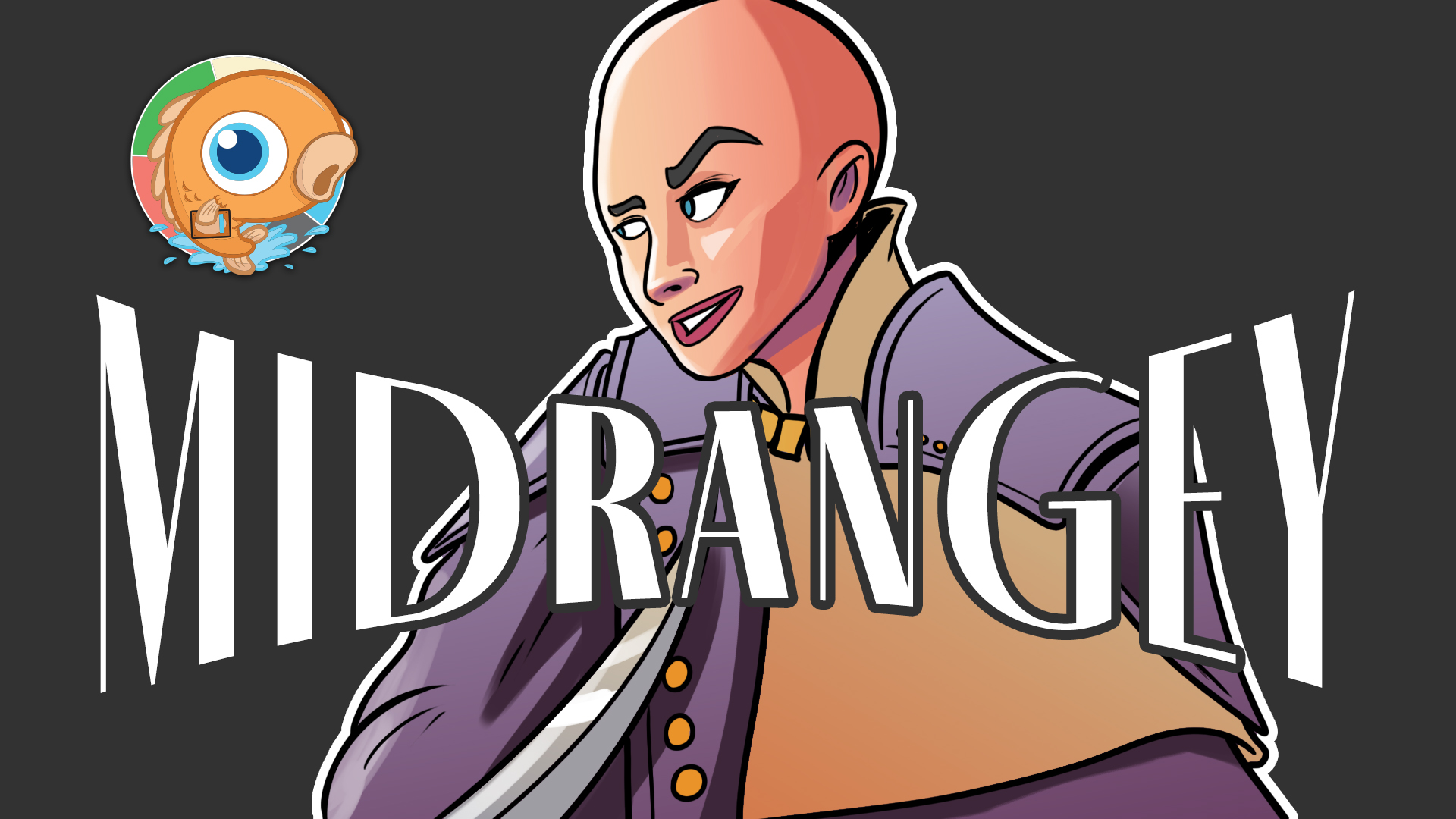Magic History: The Dawn of Combo

The Dawn of Combo
Magic players love synergy. Magic is a modular game and each deck is more than the sum of its parts. Brewers everywhere relish the feeling when a new interaction between cards is discovered. When an entire deck is built upon that interaction it has the potential to be a well-oiled, game winning machine. Such combo decks are the epitome of synergy, though it often takes a highly-skilled pilot to produce consistent results.
In the beginning years of the game, combo decks as we know them didn't exist. That is not to say that there were no powerful and game-winning combinations to play with. At one point infinite turns could be taken with Time Vault, Animate Artifact, and Instill Energy. And there was the famous Channel / Fireball combo that promised a turn-one kill.



Even with the few options available, the early years of competitive Magic contained no tournament-quality combo decks. The general consensus among tournament players was that combo decks were just gimmicks. Today's article will explore the story of how combos went from the kitchen table to the Pro Tour.
Shock and Awe
Once upon a time I sat down in a local Magic tournament to play against an out-of-town opponent. In game one I attacked my opponent with everything I had, bringing him down to a low life in the first three turns. My opponent had done nothing in the first turns of the game, and I assumed he didn't know how to play well. I had a smug look as my opponent stared at his cards. Then he said to, "I think I can win next turn." I laughed and told the person there was no way he could deal twenty damage to me next turn. Sure enough, my opponent soon had his entire deck in his hand, and I was staring at a lethal Drain Life pointed at me. I was shocked, and I knew I had to learn that deck and own it one day.

The Wishing Well
The first combo deck to win a major Magic event and achieve widespread notoriety was a deck called ProsBloom. The deck took home the trophy at Pro Tour Paris in 1997 in the hands of the infamous Mike Long. Mike's version of the deck, which he named "WishingWell.DEC" was unlike anything that had been seen before in competitive Magic. Instead of a deck that contained a combo or two, this deck was entirely devoted to it's combo. Here's what Mike played, defeating Mark Justice in the finals:

The deck was not only the first successful combo deck, but the first deck with an engine. Many combos in Magic are just infinite loops. The Prosbloom deck did not contain loops. Instead it contained a group of synergistic cards that could generate mana and card advantage repeatedly and in large volumes. The mana and cards were finite in nature.
Here's how the ProsBloom engine would work. First, Squandered Resources would be played on turn two. On turn three, lands would be tapped for mana and sacrificed for additional mana. Natural Balance would be cast, bringing the combo player's land total back up to five. Those five lands represented a total of ten mana that could be generated. At this point, you would play Cadaverous Bloom. Using the Bloom, you simply exiled unneeded cards from your hand for Black mana. The Black mana would be used to cast Infernal Contract or pay for Prosperity. You could exile more cards for mana to draw more cards. It was also possible to cast Natural Balance again in some situations. Either way, you ended up turning each extra card into two mana, which in turn drew two cards. The number of cards in hand grew until finally the entire deck was drawn. All those cards fueled a lethal Drain Life.
This combo was complicated to pull off, as proper sequencing was a must. One wrong move and you could fizzle out, unable to win the game. Even so, ProsBloom was so powerful that one of its key cards, Squandered Resources, was banned in Mirage Block tournaments. The deck managed to carry on and was still a contender in the next season's Standard. New cards were added to the deck from subsequent printings, like Meditate from Tempest. The genie was out of the bottle. From this point on Magic brewers were always looking for the next card interaction to exploit.
Urza's Saga and "Combo Winter"
When Urza's Saga was released in 1998, it ushered in a new era of Magic deck design. Players had been looking for a new combo deck, and as cards were spoiled, people were looking at certain cards like Tolarian Academy and Time Spiral. The "Academy Blue" deck was born shortly after the cards became available.

The above deck is the closest list I could find to what was being played in Standard in the months following the release of Urza's Saga. There was an Extended Pro Tour in Rome during this period, which garnered a lot of press, and that tournament was won by an Academy deck. That tournament also brought High Tide-based combo decks into the limelight for the first time. Indeed, the tournament was infested with combo decks. The cat was out of the bag; Combo was here to stay.
Fixed, but Still Broken
From the release of Urza's Saga in 1998, and all the way through 1999, combo decks were all the rage. Urza's block has a reputation as the most broken block of all time, and it is well deserved. There was even one card released in Urza's Legacy that received an emergency ban outside of Wizards's usual banned and restricted updates. Like many of the broken cards released during this time this card, Memory Jar, was designed to be a "fixed" version of a restricted spell.


Memory Jar is obviously similar to it's Red cousin, Wheel of Fortune. The extra mana cost is supposed to balance it out, as well as the fact that the cards drawn with the Jar must be played immediately. Even so, Memory Jar would earn the nickname "Broken Jar" and eventually be banned or restricted in every format. The deck that prompted emergency action by the DCI was an extended monster designed by "Mad Genius" Erik Lauer and Hall of Famer Randy Buehler.

The kill-card in Broken Jar was Megrim. The idea was that you could leverage all of the fast mana acceleration, combined with the tutoring effect of Tinker and card drawing of Memory Jar to quickly draw through most of the deck. Popping multiple Memory Jars would put extra "discard your hand'' triggers onto the stack at your end step. With a Megrim on the battlefield each Memory Jar activation would correlate to fourteen damage. It turns out that popping two Jars in one turn and casting a Megrim wasn't very hard, and this deck was an unstoppable juggernaut.
Once the Academy decks were neutralized and Memory Jar had been emergency banned it seemed like the combo fad had died out. Soon, however, it was revealed Urza's Block still had more surprises for everyone. There were a ton of cards from this block that attempted to fix fundamentally broken designs. Here's what happened when they tried to fix Necropotence.


When Yawgmoth's Bargain was first spoiled there were some people who claimed that it was too expensive to be playable. Others argued the card was even more powerful than Necropotence. Time would tell, and indeed Bargain was too good. It too suffered the same fate as the rest of the combo enablers from that era.
The deck I've chosen to feature is just one of the many iterations of the Yawgmoth Bargain deck that appeared during this time period. While each of the deck that used Yawgmoth's Bargain was a little bit different, they all shared the immense strength that cames from being able to trade life points for cards in hand.
Sabre Bargain turned life into cards, and cards into Black mana, and Black mana into Soul Feast. Soul Feast is basically a Drain Life for four damage. In this way the combo functions in a similar fashion to ProsBloom. The life points gained from Soul Feast could be turned into more cards to keep the chain going. Since four Soul Feasts only do sixteen damage, the deck played Yawgmoth's Will to cast Soul Feast from the graveyard to close out a game.



The Cereal Decks
In Pro Tour Chicago, 1999, there was the appearance of the "Fruity Pebbles" and "Cocoa Pebbles" decks. I have no idea why the decks were named after breakfast cereals, but this convention ended up being somewhat of a lasting trend.

As you can guess, Cocoa Pebbles was very similar to its Fruitier cousin. The main addition was the Dark Rituals and copies of Duress.

Both of the "Pebbles" varieties used a similar combination of cards to win. First, take any creature with a converted mana cost of zero, sacrifice it to Goblin Bombardment dealing one point of damage to the opponent. Enduring Renewal would then cause the creature to be returned to its owner's hand and then replayed for free. This is the infinite loop style of combo deck, similar to the way something like Splinter Twin works with Deceiver Exarch.
Three-card combinations can be tricky to assemble, especially if you're relying on drawing into them naturally. Stuffing these combo decks with as much card-draw and tutor effects as possible makes sense. The combo variants with the most card manipulation were the best performing ones. Cocoa Pebbles introduced Necropotence to the combo archetype and forever changed the Black enchantment from Ice Age.

The original "Necro" decks were Black aggressive decks that used different forms of disruption, coupled with the card advantage of Necropotence to dominate match ups. Cocoa Pebbles proved that Necropotence was more effective refilling someone's hand to combo off. The next big breakthrough paired Necropotence with a deadly two-card combination, forming the most feared Extended deck of all time: Trix.

Trix used the combination of Illusions of Grandeur and Donate to kill opponents. As far as combos go, this is one of the simplest. Unlike engine decks or even infinite loop decks, this combo is ridiculously simple to set up. Step one is to play Illusions and gain twenty life. Step two is to Donate it to your opponent and stick them with the yucky cumulative upkeep. This process can be sped up with Necropotence to draw cards using the extra twenty life gained from Illusions. Hoodwink could bounce an Illusions of Grandeur once it was donated to the opponent.


Two bad cards that are scary together...
One thing that made this deck so powerful is that the combo was simple and took up very little room. The other advantage was the massive card draw from Necropotence. Just casting a turn-one Necro was often enough to draw into the combo. Both Dark Ritual and Mana Vault made the casting costs of Necropotence, Donate. and Illusions of Grandeur seem trivial.
The combo had plenty of protection in the form of Duress and Force of Will. The twenty life gained from Illusions of Grandeur was fantastic protecting the deck from aggro-based opponents. The deck was incredible and was without a doubt the "deck to beat" in that year's Extended Pro Tour Qualifier season.


I hope you enjoyed our little walk through the early days of combo. There's a rich history to Magic: the Gathering, and I hope you'll join me next time as I delve into more Magic History!
Follow me on Twitter @josephfiorinijr - Islandswamp on MTGO













